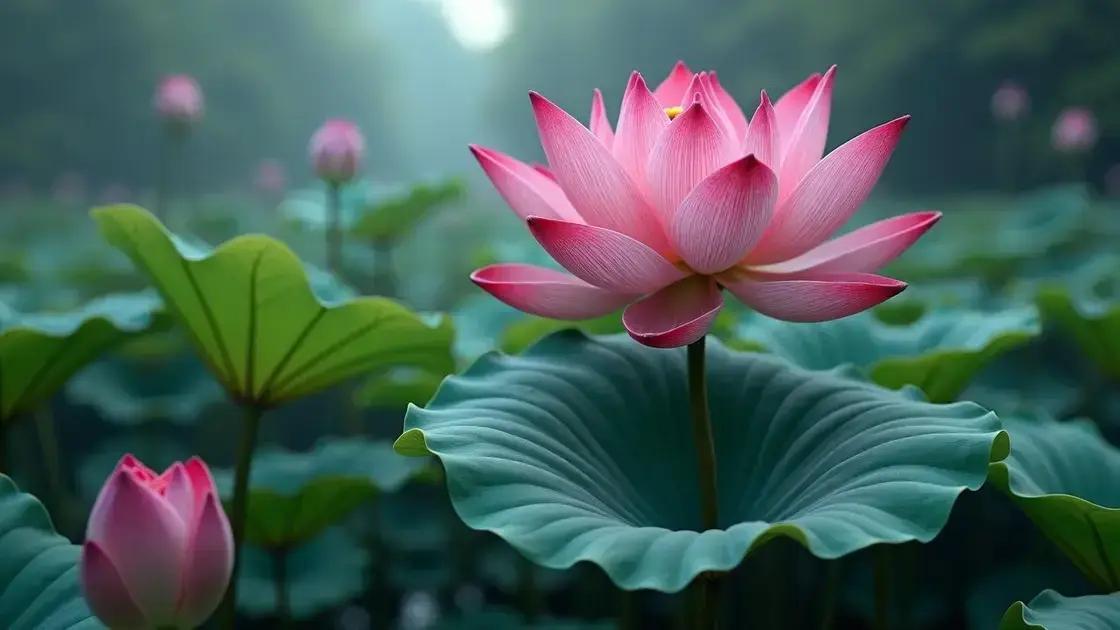How to Care for Lotus Plant: 7 Essential Tips for Thriving Growth
How to care for lotus plant can seem overwhelming at first, but it really doesn’t have to be. With the right knowledge, your lotus plant can flourish and become a stunning addition to your garden or pond. Discovering the essentials will empower you to provide the perfect environment for these beautiful aquatic plants. Let’s explore how to ensure they thrive!
Table of Contents
ToggleUnderstanding lotus plant needs for optimum care
How to care for lotus plant is essential for ensuring its beautiful blooms and healthy growth. Understanding the needs of the lotus plant will help you create the perfect environment for this stunning aquatic beauty.
Key requirements for lotus plants
- Water depth: Lotus plants thrive in water ranging from 12 to 24 inches deep, depending on the variety.
- Sunlight: These plants need at least 6 hours of direct sunlight daily to produce vibrant blooms.
- Temperature: Optimal water temperatures are between 70-90°F (21-32°C).
- Fertilization: Use a slow-release fertilizer formulated for aquatic plants to promote healthy growth.
Types of lotus plants
- American lotus (Nelumbo lutea)
- Sacred lotus (Nelumbo nucifera)
- Chinese lotus (Nelumbo nucifera var. lutea)
When deciding how to care for lotus plants, consider their growth habits and preferences. They are best suited for outdoor ponds or large containers where their roots can spread out freely.
Common challenges faced
- Pest issues: Aphids and snail infestations can harm lotus plants. Regular monitoring can help mitigate these issues.
- Water quality: Maintaining clean water is crucial; consider adding a filtration system to your pond or container.
To learn more about keeping your garden thriving, check out exploring indoor gardening techniques. With proper care and attention to their needs, your lotus plants can flourish, providing beauty and serenity to your outdoor space.
Best watering techniques for lotus plants

Best watering techniques for lotus plants play a critical role in their growth and blooming. Understanding how to provide the right amount of water will help you maintain healthy and vibrant lotus plants.
Watering frequency and amount
- Water should be kept at least 6 inches above the plant’s crown.
- Water your lotus plants once a week during the growing season.
- In colder months, reduce watering as the plants go dormant.
Techniques for effective watering
- Use a hose: Directly spraying water onto the plants helps ensure sufficient coverage.
- Flooding method: Submerge the entire container in water to keep all roots evenly watered.
- Drip irrigation: A controlled drip system can provide consistent moisture without over-saturating the soil.
Water quality considerations
Ensure the water you use for your lotus plants is free from chlorine and other chemicals. Utilizing rainwater or filtered water can provide the best results.
To enhance your understanding of plant care, consider exploring indoor gardening techniques that could also benefit your lotus plants. Consistent watering with the right techniques will ensure your lotus thrives beautifully.
Ideal sunlight conditions for lotus plants
Ideal sunlight conditions for lotus plants are crucial for their growth and beautiful blooms. Providing adequate sunlight will help your lotus thrive and produce the stunning flowers they’re known for.
Optimal sunlight requirements
- Lotus plants need at least 6 hours of direct sunlight to flourish.
- Morning sunlight is especially beneficial, offering gentle light for their growth.
- Avoid excessive shade from trees or buildings, as it can inhibit blooming.
Signs of insufficient light
- Leaves turning yellow and appearing weak.
- Reduced blooming or small flower size.
- Stunted growth of the plant overall.
Monitoring sunlight exposure is key. Consider using reflective surfaces to enhance light exposure for your lotus plants.
Adjusting light conditions
- Container placement: Move potted lotus plants to sunnier spots if they’re not receiving enough light.
- Trimming surrounding plants: Remove nearby vegetation that may create shade.
If you’re also interested in other gardening techniques, consider exploring indoor gardening techniques that can complement your lotus care. Creating the right light conditions will ensure your lotus plants remain healthy and vibrant.
In conclusion
How to care for lotus plants involves understanding their unique needs for water, sunlight, and overall environment. By providing optimal watering techniques, ensuring ideal sunlight conditions, and being aware of their growth requirements, you can create a thriving habitat for these beautiful aquatic plants. As you cultivate your lotus, remember that knowledge and attention to detail are crucial. For more insights, check out tips on enhancing your indoor garden to further enrich your gardening journey.

